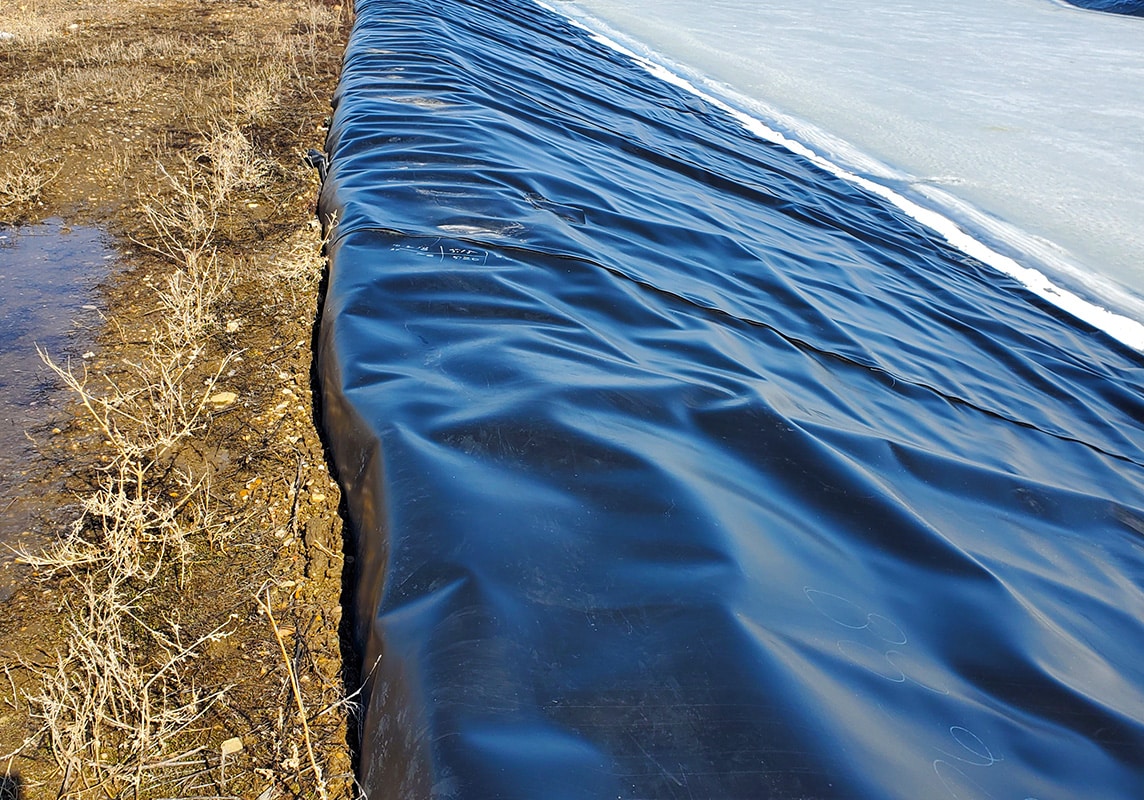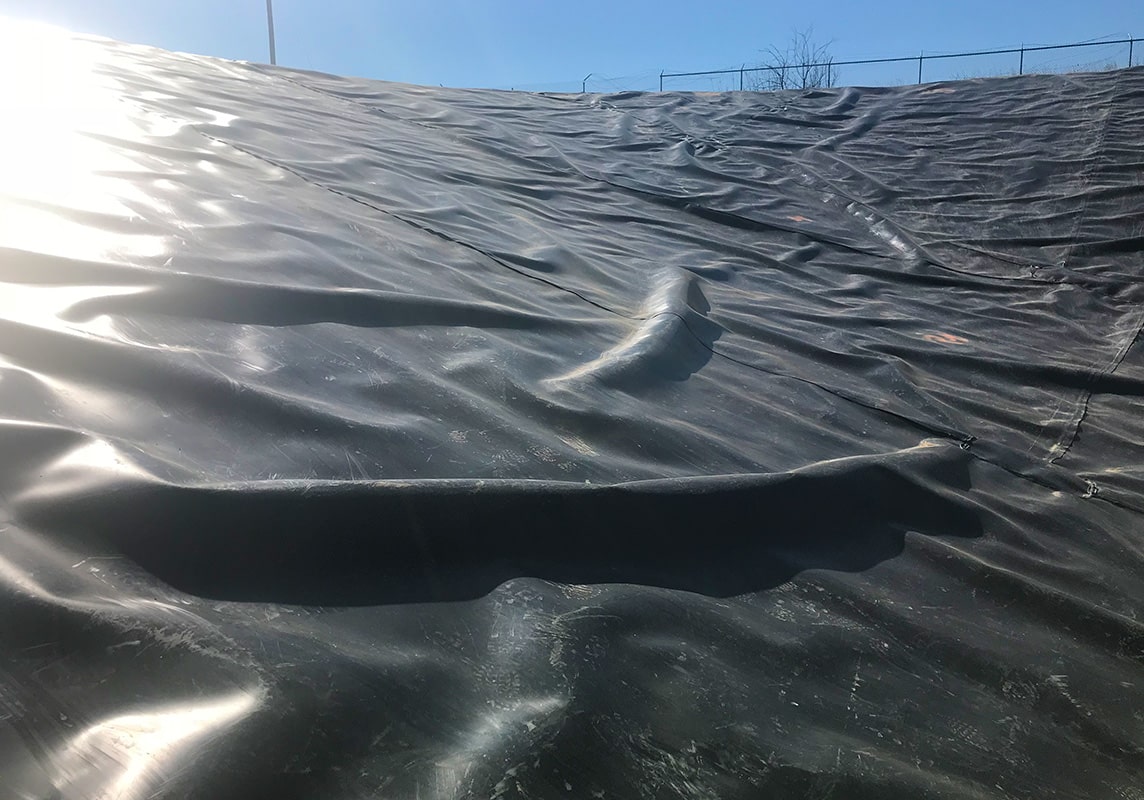

How to Stay Safe Around a Wastewater Lagoon
By Stephanie Seymanski, PE and Rika Lashley, PE
Have you ever used a Slip ’n’ Slide? It can be great fun, just as long as it doesn’t empty out into a wastewater treatment lagoon! If you have nightmares of this nature, please read on.
Many smaller communities across the country rely on lagoon systems to treat their wastewater. Historically, lagoons were lined with clay liners and overlaid with riprap. Accessing the water surface of these lagoons was also relatively easy and safe.
However, over the past couple of decades, synthetic liners have replaced the older clay liners because they are more leak-proof and less susceptible to plant and animal activity which can deteriorate their ability to hold water. Many synthetic liners do not need to be covered and are exposed around the edge of the lagoon basin. Side slopes can also be as steep as a 3:1.


As with most treatment facilities, lagoons need to be monitored while under construction and when in operation which means teams of engineers, contractors, operators, and maintenance staff are near or in them on a regular basis. The slippery nature of modern-day lagoons means we should adopt a stepped-up “safety-first” approach when on-site. This article is for engineers, operators, contractors, or anyone else doing one or more of the following:
- Visiting the lagoon facility to assess the condition of an existing liner or observing the installation of a new liner.
- Collecting process samples and servicing the lagoon surface by boat.
- Sludge judging or installing a new lagoon liner.
- Traversing across the exposed synthetic basin liner.
Slick in Both Wet and Dry Conditions
Wastewater lagoon basins hold wastewater that is in the process of being treated and is generally best avoided. Exposed synthetic lagoon liners can be very slick, whether wet or dry. Safely accessing a lagoon cell is critical to avoid slipping and coming in contact with the contents of the lagoon in use. Even if a lagoon is filled with “clean” water for leak testing, a slip could be dangerous because it is very difficult to get out of the water and back up the liner when wet.
The first rule of thumb is to stay off the liner completely if direct access is not required for your task. However, if you do need to access a lined lagoon cell, or a lagoon in the process of being lined, here are some things to keep in mind:
- Wear shoes that are flexible and have a good grip even when wet. Smooth-soled shoes may cause you to slip even when the liner is dry.
- Does the lagoon have safety ropes in place or a stationary or portable ladder? If so, plan to use them to access the lagoon even if that means a longer walk to reach them. Taking a shortcut could get you wet or worse.
- Although not meant to be a safety feature, aeration systems using floating laterals can act as added “handholds” to help you escape an active lagoon after an accident.
- Consider tying off if you’re on a steep slope (or avoid the steep slope altogether if possible).
- If a project requires safety features, coordinate with the contractor to install them as soon as possible to make accessing the basin during construction safer for all.
- Liners can wrinkle during construction and may present tripping hazards. If possible, skirt around wrinkles and walk in areas that lie flush with the ground for better footing.
- Be cognizant of anchor trenches and other materials and debris around the top of a lagoon to avoid potential tripping hazards during construction.
- If you are accessing an aerated lagoon, consider turning off the aeration in the areas you need to access.
- Use the buddy system if you need to access an active lagoon, and make sure you have safety equipment to exit the lagoon in case you or your buddy slip and fall.
- If you and your fellow observer need to use a boat to launch into the lagoon for sludge sampling or other inspections, ask a third person to monitor from the edge of the lined lagoon cell in case of emergency.
Let’s Talk More
If you’re interested in more information about lagoon safety, please get in touch with Stephanie Seymanski or Rika Lashley. And if you’re curious about safety features that can be installed in new or existing lagoons, watch for a follow-up article, “Lagoon Design for Safety.”
Reach out



